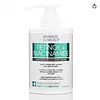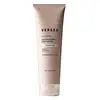What's inside
What's inside
 Key Ingredients
Key Ingredients

 Benefits
Benefits

 Concerns
Concerns

 Ingredients Side-by-side
Ingredients Side-by-side

Water
Skin ConditioningGlycerin
HumectantCetyl Alcohol
EmollientCaprylic/Capric Triglyceride
MaskingC13-15 Alkane
SolventButyrospermum Parkii Butter
Skin ConditioningC18-21 Alkane
SolventRetinol
Skin ConditioningAloe Barbadensis Leaf Juice
Skin ConditioningGlyceryl Stearate
EmollientCetearyl Phosphate
Skin ConditioningSynthetic Beeswax
Emulsion StabilisingNiacinamide
SmoothingOryza Sativa Bran Extract
Skin ConditioningHelianthus Annuus Extract
EmollientRosmarinus Officinalis Leaf Extract
AntimicrobialXanthan Gum
EmulsifyingTocopherol
AntioxidantCarbomer
Emulsion StabilisingTetrasodium Glutamate Diacetate
Phenoxyethanol
PreservativeCaprylyl Glycol
EmollientEthylhexylglycerin
Skin ConditioningHexylene Glycol
EmulsifyingBHT
AntioxidantSodium Hydroxide
BufferingWater, Glycerin, Cetyl Alcohol, Caprylic/Capric Triglyceride, C13-15 Alkane, Butyrospermum Parkii Butter, C18-21 Alkane, Retinol, Aloe Barbadensis Leaf Juice, Glyceryl Stearate, Cetearyl Phosphate, Synthetic Beeswax, Niacinamide, Oryza Sativa Bran Extract, Helianthus Annuus Extract, Rosmarinus Officinalis Leaf Extract, Xanthan Gum, Tocopherol, Carbomer, Tetrasodium Glutamate Diacetate, Phenoxyethanol, Caprylyl Glycol, Ethylhexylglycerin, Hexylene Glycol, BHT, Sodium Hydroxide
Water
Skin ConditioningIsopentyldiol
HumectantJojoba Esters
EmollientTheobroma Cacao Seed Butter
EmollientCetearyl Alcohol
EmollientCetyl Alcohol
EmollientStearyl Alcohol
EmollientSqualane
EmollientCaprylic/Capric Triglyceride
MaskingRetinol
Skin ConditioningTocopherol
AntioxidantGlycine Soja Oil
EmollientErgothioneine
AntioxidantGellan Gum
Hydroxyacetophenone
AntioxidantHydrogenated Lecithin
EmulsifyingXanthan Gum
EmulsifyingCaprylyl Glycol
EmollientPolyglyceryl-10 Dioleate
EmulsifyingPolyglyceryl-10 Dipalmitate
EmollientCetearyl Glucoside
Emulsifying1,2-Hexanediol
Skin ConditioningSodium Gluconate
Skin ConditioningPhenoxyethanol
PreservativeCitric Acid
BufferingWater, Isopentyldiol, Jojoba Esters, Theobroma Cacao Seed Butter, Cetearyl Alcohol, Cetyl Alcohol, Stearyl Alcohol, Squalane, Caprylic/Capric Triglyceride, Retinol, Tocopherol, Glycine Soja Oil, Ergothioneine, Gellan Gum, Hydroxyacetophenone, Hydrogenated Lecithin, Xanthan Gum, Caprylyl Glycol, Polyglyceryl-10 Dioleate, Polyglyceryl-10 Dipalmitate, Cetearyl Glucoside, 1,2-Hexanediol, Sodium Gluconate, Phenoxyethanol, Citric Acid
 Reviews
Reviews

Ingredients Explained
These ingredients are found in both products.
Ingredients higher up in an ingredient list are typically present in a larger amount.
This ingredient is an emollient, solvent, and texture enhancer. It is considered a skin-softener by helping the skin prevent moisture loss.
It helps thicken a product's formula and makes it easier to spread by dissolving clumping compounds.
Caprylic Triglyceride is made by combining glycerin with coconut oil, forming a clear liquid.
While there is an assumption Caprylic Triglyceride can clog pores due to it being derived from coconut oil, there is no research supporting this.
Learn more about Caprylic/Capric TriglycerideCaprylyl Glycol is a humectant and emollient, meaning it attracts and preserves moisture.
It is a common ingredient in many products, especially those designed to hydrate skin. The primary benefits are retaining moisture, skin softening, and promoting a healthy skin barrier.
Though Caprylyl Glycol is an alcohol derived from fatty acids, it is not the kind that can dry out skin.
This ingredient is also used as a preservative to extend the life of products. It has slight antimicrobial properties.
Learn more about Caprylyl GlycolCetyl Alcohol is a fatty alcohol. Fatty Alcohols are most often used as an emollient or to thicken a product.
Its main roles are:
Though it has "alcohol" in the name, it is not related to denatured alcohol or ethyl alcohol.
The FDA allows products labeled "alcohol-free" to have fatty alcohols.
Learn more about Cetyl AlcoholPhenoxyethanol is a preservative that has germicide, antimicrobial, and aromatic properties. Studies show that phenoxyethanol can prevent microbial growth. By itself, it has a scent that is similar to that of a rose.
It's often used in formulations along with Caprylyl Glycol to preserve the shelf life of products.
Retinol is a gold-standard ingredient for anti-aging. It is a form of Vitamin A and belongs to the class of retinoids that also includes tretinoin.
Why is retinol famous?
It has the most scientific studies backing up its skin benefits out of all the non-prescription ingredients.
Retinol is proven to:
This is why retinol is effective at removing wrinkles, fading dark spots, treating acne, and reducing the appearance of pores.
Studies show retinol is less effective when exposed to UV. Be sure to look for appropriate packaging to keep your retinol potent (similar to Vitamin C).
Using retinol or any retinoids will increase sun-sensitivity in the first few months. Though studies show retinoids increase your skin's natural SPF with continuous use, it is best to always wear sunscreen and sun-protection.
We recommend speaking with a medical professional about using this ingredient during pregnancy.
Retinol may cause irritation in some people, so be sure to patch test. Experts recommend 'ramping up' retinol use: start using this ingredient once a week and work up to using it daily.
Read about Tretinoin
Learn more about RetinolTocopherol (also known as Vitamin E) is a common antioxidant used to help protect the skin from free-radicals and strengthen the skin barrier. It's also fat soluble - this means our skin is great at absorbing it.
Vitamin E also helps keep your natural skin lipids healthy. Your lipid skin barrier naturally consists of lipids, ceramides, and fatty acids. Vitamin E offers extra protection for your skin’s lipid barrier, keeping your skin healthy and nourished.
Another benefit is a bit of UV protection. Vitamin E helps reduce the damage caused by UVB rays. (It should not replace your sunscreen). Combining it with Vitamin C can decrease sunburned cells and hyperpigmentation after UV exposure.
You might have noticed Vitamin E + C often paired together. This is because it is great at stabilizing Vitamin C. Using the two together helps increase the effectiveness of both ingredients.
There are often claims that Vitamin E can reduce/prevent scarring, but these claims haven't been confirmed by scientific research.
Learn more about TocopherolWater. It's the most common cosmetic ingredient of all. You'll usually see it at the top of ingredient lists, meaning that it makes up the largest part of the product.
So why is it so popular? Water most often acts as a solvent - this means that it helps dissolve other ingredients into the formulation.
You'll also recognize water as that liquid we all need to stay alive. If you see this, drink a glass of water. Stay hydrated!
Learn more about WaterXanthan gum is used as a stabilizer and thickener within cosmetic products. It helps give products a sticky, thick feeling - preventing them from being too runny.
On the technical side of things, xanthan gum is a polysaccharide - a combination consisting of multiple sugar molecules bonded together.
Xanthan gum is a pretty common and great ingredient. It is a natural, non-toxic, non-irritating ingredient that is also commonly used in food products.
Learn more about Xanthan Gum